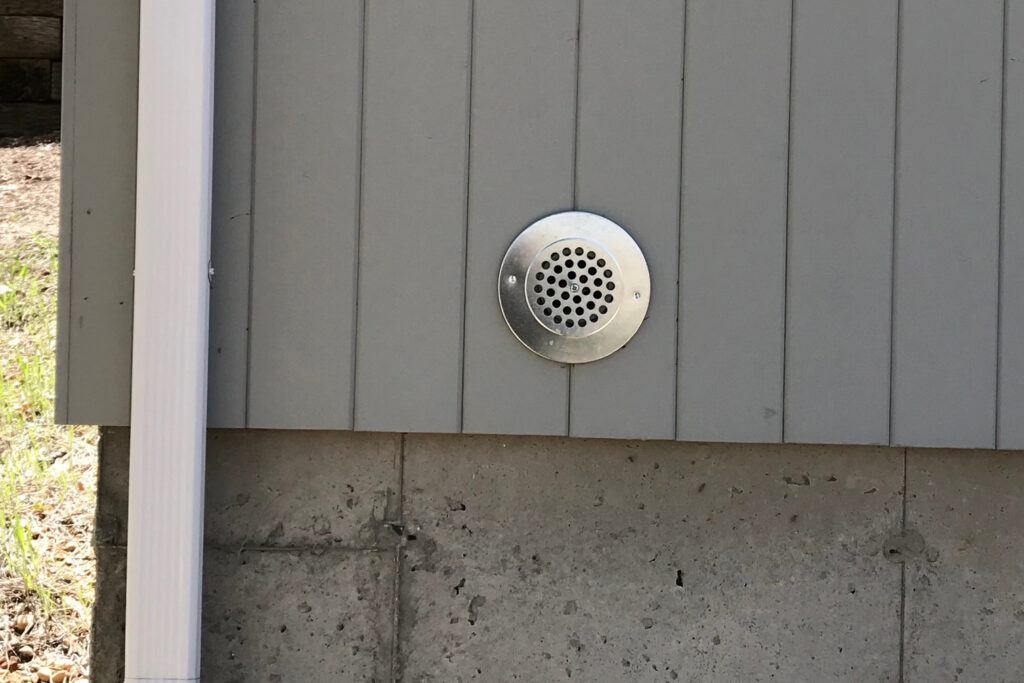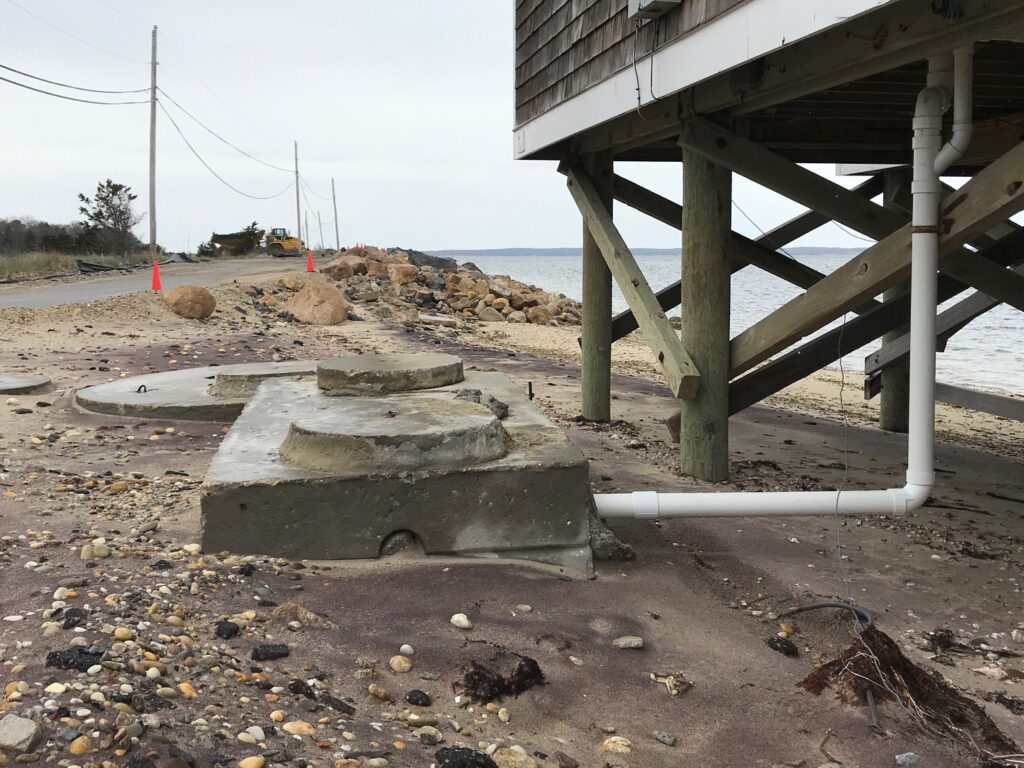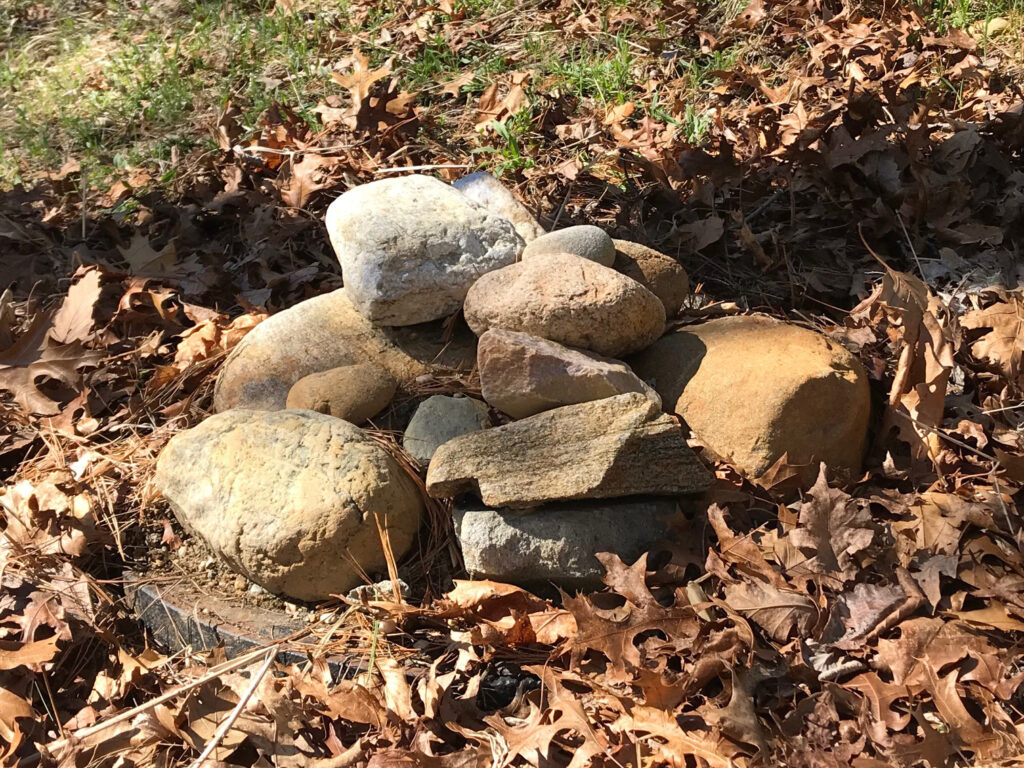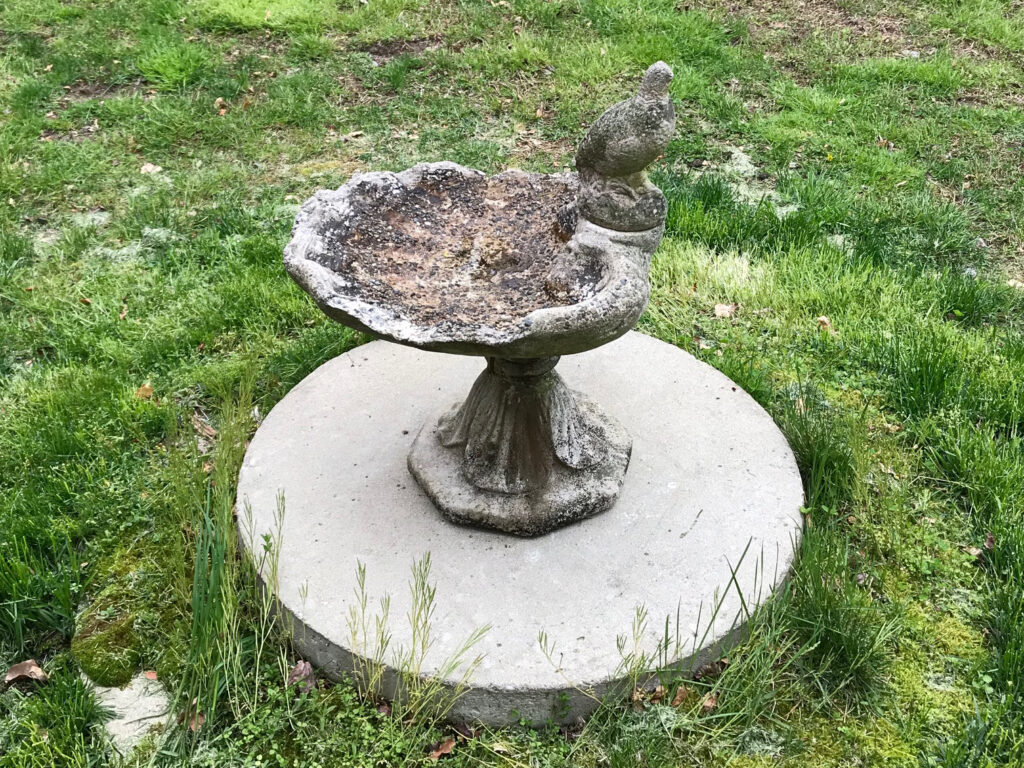Nitrogen is the culprit in most cases when it comes to triggering harmful algal blooms, and at Georgica Pond, 50% of the nitrogen is coming from septic systems. That is why FOGP is advocating for installation of the low-nitrogen septic systems, which can reduce the amount of nitrogen entering the groundwater by 70%.
Septic systems can also contribute to bacterial loads in the pond and depending on how well maintained, how old and where your septic system is located can determine a lot about how much fecal bacteria is escaping from your septic tank and potentially contaminating Georgica Pond. Dr. Gobler’s research has found human fecal bacteria in the pond, but in low amounts compared with bacteria contributed by dogs, small mammals and birds. High levels of bacteria like Enterococcus and E. coli can create conditions unsafe for swimming and boating and lead to shellfish closures.
While you evaluate a state-of-the-art low-nitrogen septic system for your home, your existing septic systems requires maintenance right now.
The Suffolk County Department of Health recommends that every septic tank or cesspool should be pumped out at least every two to three years.* The frequency varies depending on how many people live in the house and whether it’s a year-round or seasonal home.
Here are four simple steps to follow to have your septic system pumped.
LOCATE: The first thing you need to do is locate your septic system. It is important to know where it is in your landscape so you can monitor it. In addition, when you need to have it pumped, it is less expensive if the lid to the septic system is already exposed. Septic tank lids can be raised to allow easier accessibility or you can put a marker on it such as a pile of rocks or a statue!
Septic tank lids disguised with a pile of rocks and birdbath.
Septic contractors will charge you to locate your septic system and sometimes this can get quite elaborate and costly including using video cameras in the waste pipe exiting the house. A good place to look first is if you have a recent survey of your property. Septic systems are usually located on surveys. Another place to look is for the waste line plumbing vent on the outside of your home. Septic systems are generally downgradient or directly in line with this.
INSPECT. Be sure the ground around the tank appears firm and stable. It should not be soggy or caving in.

MAINTAIN. As mentioned above, keep the septic tank accessible. Do not let the lid get covered over in earth and vegetation. In addition, there are many things that should NOT be flushed down the drain. These include cooking oil and grease, paper products other than toilet paper, hygiene products. A kitchen sink garbage disposal is not advisable. Have it removed and compost your kitchen scraps.

beach in East Hampton.
PUMP. When ready, call a septic maintenance company and schedule your pump out.
Houses with four and fewer bedrooms generally have a 1,000-gallon septic tank. The cost to have a tank of this size pumped starts at around $425.
For larger homes, tanks are generally 1,500-2,000 gallons and these start at $650 to pump. There are a number of reputable septic service companies in our area, here are just a few of them:
- Hampton Septic Services, 631-267-7515
- John K. Ott, 631-324-0947
- South Fork Septic, 631-283-0333
*Once you’ve installed a low-nitrogen septic system, the manufacturer will be responsible for 3 years of maintenance. After 3 years, a maintenance contract becomes the homeowner’s responsibility and is mandatory.


